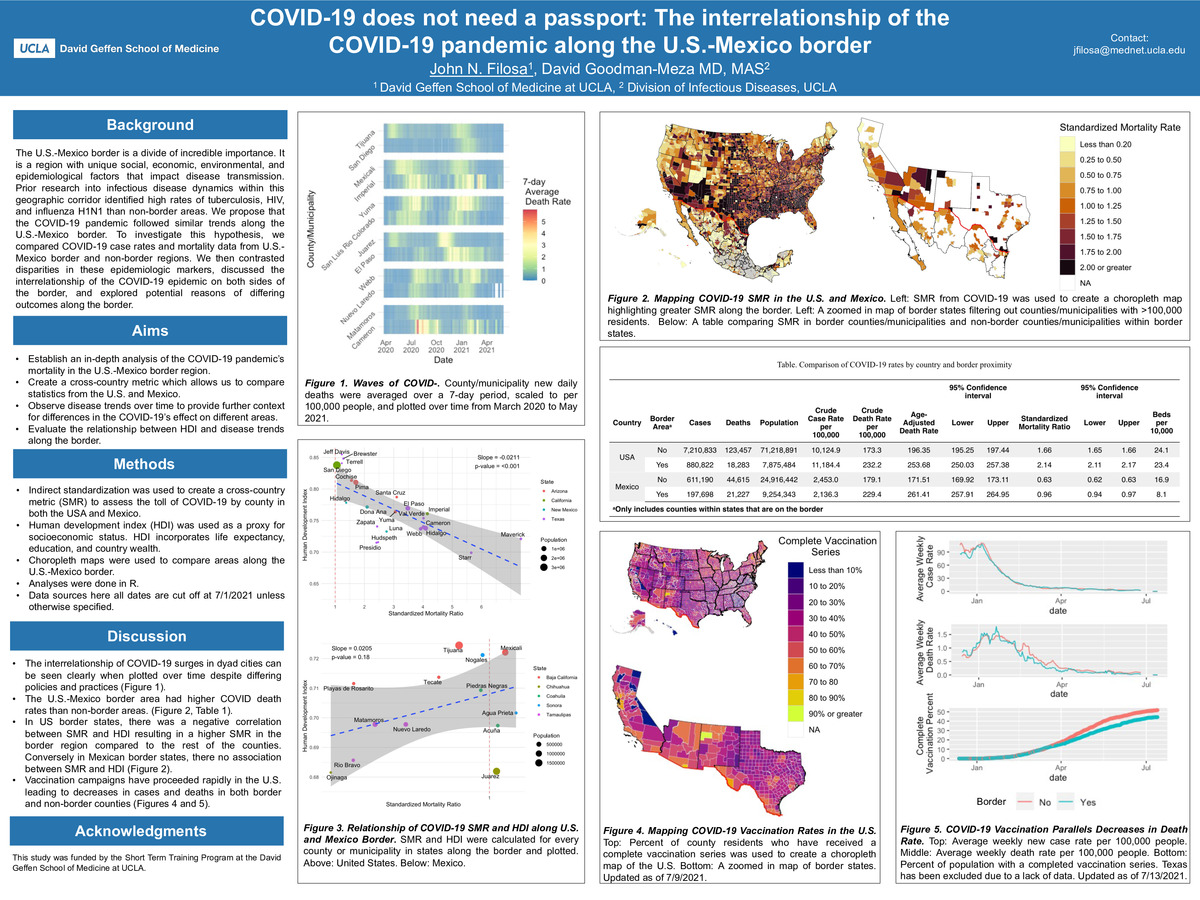-
Author
John Filosa -
PI
Dr. David Goodman-Meza
-
Co-Author
-
Title
COVID-19 does not need a passport: The interrelationship of the COVID-19 pandemic along the U.S.-Mexico border
-
Program
STTP
-
Other Program (if not listed above)
-
Abstract
The U.S.-Mexico border is a divide of incredible importance not only to immigration but as a region with unique social, economic, environmental, and epidemiological factors that impact disease transmission. We investigated how the COVID-19 pandemic followed trends of previously studied diseases in the corridor such as tuberculosis, HIV, and influenza H1N1. We used indirect standardization to age-adjust mortality rates (standardized mortality ratios [SMR]) in both countries. Mortality was higher in U.S. counties along the border compared to the national average (SMR 2.14, 95% CI 2.11-2.17). In Mexico, border counties had a slightly lower mortality to the national average (SMR 0.96, 95% CI 0.94-0.97). Over time, surges of cases and deaths were similar in dyad cities along the U.S.-Mexico border visualizing the interconnectedness of the region. In U.S. border states, SMR was shown to negatively correlate with human development index (HDI), a socioeconomic proxy, resulting in a higher SMR in the border region compared to the rest of the counties. Conversely in Mexican border states, there was no association between SMR and HDI. Additionally, as vaccination campaigns in U.S. counties accelerated, cases and deaths decreased similarly in both border and non-border counties. These data state how targeted intervention along the U.S.-Mexico border region is a necessity when confronting COVID-19 and have implications for future control of infectious diseases in the region.
-
PDF
-
Zoom
https://uclahs.zoom.us/j/96806605166?pwd=RkFWejllczQ0M0o5cU52V0VTbys2UT09

